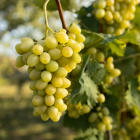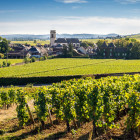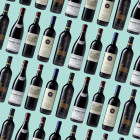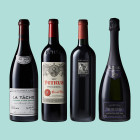
Why 2019 Red Burgundy Might Be One of the Greatest Vintages of All Time
Why 2019 Red Burgundy Might Be One of the Greatest Vintages of All Time
When Burgundy comes up over dinner, the same vintages always seem to dominate the conversation: 1990, 1999, 2005, 2010. These are the years collectors and drinkers come back to again and again, often for good reason. But I’d argue we’re overlooking one that deserves to stand alongside them, not out of nostalgia or market momentum, but on merit: 2019.
The more I taste the wines, speak to producers, and look at the conditions that shaped the vintage, the more convinced I am that 2019 will be recognised as one of the all-time greats, not just of the past decade but of the modern era.
This isn’t only about how the wines taste today. It’s about what the vintage represents. It’s the product of a changing climate, improved farming practices, refined winemaking techniques, and a more meticulous approach to every stage of the process. 2019 feels like the first truly great modern Burgundy vintage, both in style and substance. And if we define greatness not only by quality, but by timing, context, and what it signals about where Burgundy is heading, then 2019 more than earns its place among the best.
The Season That Had Everything, Including Risk
The 2019 growing season was intense. A dry, warm winter left the soils lacking moisture going into spring. Then we experienced a burst of early warmth, followed by a frost in early April that knocked back yields, particularly in the Côte de Beaune. When flowering eventually arrived, it came with coulure and millerandage, essentially nature’s way of cutting the crop and concentrating what was left.
And then came the heat. Two separate waves in late June and again in July, with temperatures going over 40°C. Normally, that would be a recipe for trouble. Too much sun, too little water, you’re looking at jammy fruit, high alcohol, and wines that feel tired before they’ve even started.
But this time, something changed the outcome.
In late August and early September, a cool northern wind swept through. It dried the grapes and helped concentrate both sugar and acidity simultaneously. That balance, ripeness without loss of freshness, gave producers the opportunity to pick fruit that had both depth and energy. That moment probably defined the vintage.
Richness Without Excess
Tasting 2019 reds is a bit of a paradox. They’re generous, plush, and ripe but without heaviness. There’s fruit, but it’s not over the top. There’s structure, but it’s not austere. They’re layered, expressive wines that manage to be both serious and pleasurable.
This isn’t 2003. It’s not 2018 either. The best 2019s are supple without being soft, ripe without being cooked, and aromatic without volatility. They have shape, lift, and clarity.
William Kelley called 2019 “one of the most compelling red Burgundy vintages of the millennium”, comparing it to the structure of 2005 and the charm of 2009. Charles Curtis described it as “hedonistic but structured”. James Suckling said, simply, “Burgundy hits the bullseye with 2019”.
The wines have enough fruit and polish to drink now, but they’ve also got the bones to age. Blind Burgfest tastings in 2023 revealed that the 2019s were holding up brilliantly, in many cases outperforming the denser, more extracted 2020s.
The Vintage That Shows How Much Burgundy Has Evolved
To understand why 2019 is different, you have to step back and look at the bigger picture. Burgundy today is not what it was 20 or 30 years ago. This isn’t 1990 or 1999. The region has changed, not just because of climate, but because of how producers now think, work, and make decisions.
In the past, a vintage like 2019 would likely have tipped into over-ripeness. We’d have seen volatile acidity, clumsy extraction, and wines that felt pushed. But Burgundy today is better equipped to handle a hot year. Growers pick earlier. They manage canopies more carefully. They sort more precisely. They extract more gently. And they use whole bunch fermentation not as a fashion, but as a tool to balance out warmth and add dimension.
What makes 2019 stand out is that it’s the first time you can really see all that work paying off in a warm vintage. The wines are powerful because the fruit was concentrated, with smaller berries and thicker skins, but they’re balanced because the growers knew exactly what to do with them.
This isn’t a lucky vintage. It’s one that shows how far Burgundy has come.
Climate Change Is Here. 2019 Shows It’s Still Possible
You can’t talk about Burgundy today without talking about climate change. It’s the dominant factor now, and it’s reshaping the region. Where once growers worried about ripeness, they now worry about losing freshness.
2019 faced that exact challenge and passed it.
Unlike 2003, which was scorching and picked in August, or 2018, which sometimes leaned towards overproduction and softer profiles, 2019 found a tighter balance. Cool nights in August and September helped retain acidity. That late-season wind made a huge difference. The result? Wines that still feel classical in profile, even if the growing season wasn’t.
This is what makes 2019 so exciting. It’s not a throwback vintage. It’s a signpost for what great Burgundy can look like in a warming climate if handled right.
Not Just About the Big Names
One of the more exciting parts of 2019 is that the quality wasn’t confined to the top of the pyramid.
Due to the concentration in the fruit, even entry-level wines performed well. I’ve tasted Bourgogne Rouges that could pass for Premier Cru. Village wines that have more clarity, depth, and structure than many Grand Crus from other vintages.
That’s rare in Burgundy. Often, greatness is top-heavy, found only in the blue-chip sites. But 2019 brought consistency across levels and regions. From the Hautes-Côtes to the heart of the Côte de Nuits, the floor was high.
For collectors, that means depth. For drinkers, it means access, at least for now.

"One of the most compelling red Burgundy vintages of the millennium."
William Kelley, wfkelley.com
Where Does It Rank Among the Greats?
Let’s compare 2019 with some of the iconic years that came before.
- 1990: Legendary, no question. Rich, ripe, with beautiful structure. But the winemaking wasn’t where it is today, and bottle variation can be an issue now.
- 1999: Perhaps the most complete of the 90s. Perfumed, structured, built to age. But it was a big crop, and the best wines were often limited to top sites.
- 2005: The benchmark for the modern era. Deep, poised, and slow to evolve. 2019 has that same completeness but feels more accessible and expressive now.
- 2010: Elegant, pure, and transparent. But more tensile and less generous in its youth. 2019 shows more early charm without sacrificing potential.
The short version? 2019 brings together the structure of 2005, the fruit character of 2009, and the detail of 2010, all in one glass.
No Vintage Is Perfect
There are caveats, of course. Some wines were picked late and pushed too far, especially on richer soils. A few came in over 15% alcohol, and in rare cases even 16%. These wines stand out, and not in a good way.
But those are outliers. The majority sit around 13.5 to 14% and carry it well. The balance is there, and the acidity is holding. ABV alone isn’t the issue. What matters is whether the wine wears it comfortably. Most 2019s do.
The other challenge is availability. Yields were low, and demand was high. Prices rose quickly. The top wines are already expensive and hard to find. But there’s still value to be had, especially at village and Premier Cru level, if you’re looking in the right places.
Why You Should Be Buying (and Cellaring) 2019 Now
If you’re building a cellar, 2019 red Burgundy is a no-brainer. The wines offer:
- Immediate pleasure, with seductive fruit and silky textures
- Structural integrity for 15-30 years of ageing
- Broad quality across communes and classifications
- A stylistic balance that feels uniquely modern and unmistakably Burgundian
- But there’s a larger reason to invest in 2019: it’s a snapshot of what great Burgundy looks like today.
- It captures a moment where climate, technique, and ambition all converged.
In twenty years, we may look back at 2019 the way we now look at 1990 or 1999, not just as a great year, but as a reference point. And those who collected and appreciated it early will feel they were ahead of the curve.
2019 Is a Modern Classic in the Making
The word “great” gets thrown around easily in the world of wine. But when we apply it to Burgundy, it should mean something more. It should speak not only to quality, but to identity, relevance, and resonance over time.
By those standards, 2019 is a great and potentially historic year. It is a vintage that could not have happened twenty years ago and might not happen again in quite the same way. It is a product of change, but also of wisdom.
For all these reasons, I believe that 2019 red Burgundy is not only one of the greatest vintages of the modern era, but may, in time, prove to be one of the greatest of all time.






